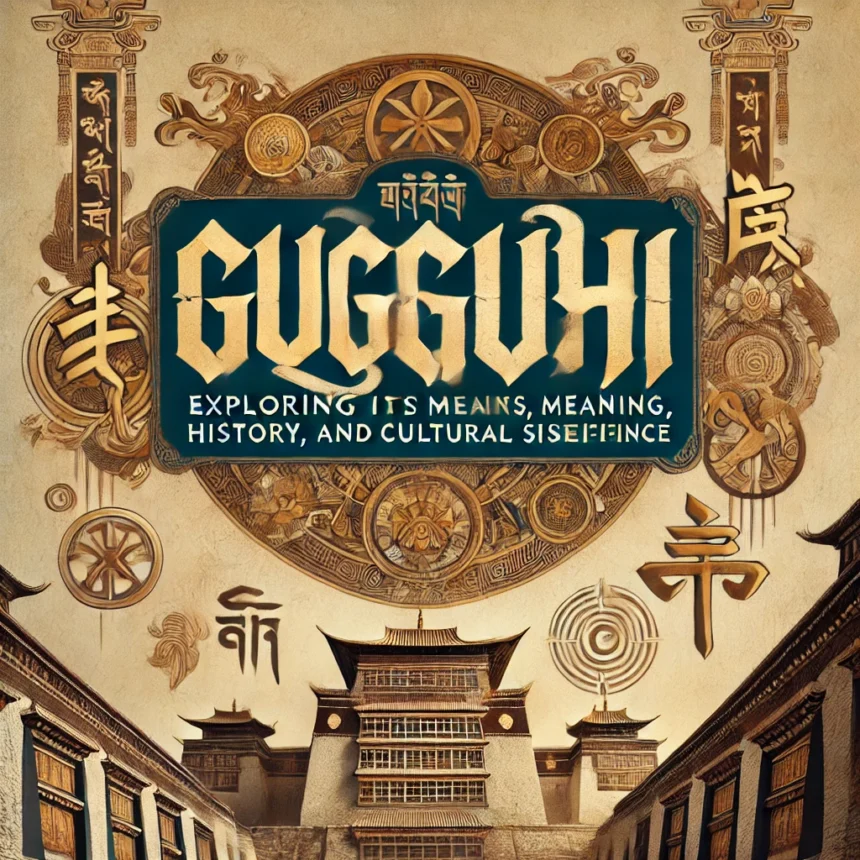Gugequshi is a term that holds deep cultural and historical significance. While it may not be widely recognized in mainstream discussions, it is closely tied to ancient Tibetan traditions, storytelling practices, and historical narratives. Whether referring to Tibetan Buddhist rituals, oral storytelling traditions, or the historical legacy of the Guge Kingdom, Gugequshi represents a fascinating blend of history, spirituality, and cultural heritage.
In this article, we will explore the various meanings of Gugequshi, its historical roots, and its impact on modern storytelling and cultural preservation.
Table of Contents
ToggleThe Meaning and Origins of Gugequshi
The term “Gugequshi” can be broken down into two components: “Guge,” which refers to the ancient Guge Kingdom in Western Tibet, and “qushi,” which can be translated as “stories” or “narratives.” Together, Gugequshi can be interpreted as “stories of Guge” or “narratives from Guge.”
The Guge Kingdom, which flourished between the 10th and 17th centuries, was known for its artistic achievements, Buddhist teachings, and architectural marvels. It was a hub of cultural and religious development, influencing Tibetan Buddhism and trade in the region. The stories associated with Guge—whether historical, mythical, or religious—form an integral part of Tibetan heritage.
The Guge Kingdom: A Historical Perspective
The Guge Kingdom was an influential Tibetan state that emerged after the collapse of the Tibetan Empire in the 9th century. Located in present-day Western Tibet, the kingdom played a crucial role in preserving Buddhist teachings, fostering artistic expression, and maintaining trade routes with neighboring regions such as India and Nepal.
One of the most significant contributions of the Guge Kingdom was its role in reviving Tibetan Buddhism. After the decline of Buddhism in Tibet during the 9th century, Guge became a center for religious learning and artistic innovation. The kingdom’s rulers, particularly King Yeshe Ö, were strong patrons of Buddhism and invited scholars from India to help translate Sanskrit Buddhist texts into Tibetan.
The Guge region is also home to remarkable ruins, including monasteries and temples adorned with exquisite murals. These structures, although weathered by time, provide valuable insights into the kingdom’s cultural and spiritual legacy. The stories and legends associated with these sites contribute to the broader concept of Gugequshi.
Gugequshi in Tibetan Buddhism
In the context of Tibetan Buddhism, Gugequshi is often associated with religious artifacts and teachings. One of the most intriguing aspects is its connection to ritual daggers known as “phurba.”
Phurba daggers are sacred objects used in tantric Buddhist rituals. These three-sided daggers symbolize the cutting away of ignorance, attachment, and aversion—the three mental afflictions that hinder enlightenment. Some of the finest phurba daggers were crafted in the Guge Kingdom, making them highly valued among Buddhist practitioners.
Beyond physical artifacts, the stories of Guge monks and scholars have been passed down through generations. These narratives include tales of enlightenment, spiritual trials, and the role of Guge rulers in spreading Buddhist teachings. Many of these stories are preserved in Tibetan Buddhist texts and continue to inspire practitioners today.
Gugequshi as an Oral Storytelling Tradition
Storytelling has always been an essential part of human culture, and Gugequshi extends beyond its historical and religious connotations into the realm of oral traditions. For centuries, Tibetan elders have shared Gugequshi—stories of wisdom, morality, and history—through spoken word.
These stories often feature:
- Tales of the Guge Kings – Narratives about the legendary rulers of Guge and their role in shaping Tibetan culture.
- Buddhist Parables – Stories that convey Buddhist teachings through symbolic characters and events.
- Mythical Legends – Stories about celestial beings, hidden treasures, and supernatural forces protecting the sacred sites of Guge.
In modern times, these stories have evolved beyond oral traditions. Digital media, books, and social platforms have played a role in preserving and sharing Gugequshi with a global audience.
Gugequshi in Modern Digital Storytelling
With advancements in technology, the way people consume stories has changed dramatically. Gugequshi has found a place in digital storytelling, where ancient narratives are adapted into modern formats such as podcasts, animations, and interactive media.
Platforms like YouTube, blogs, and social media have allowed Tibetan cultural enthusiasts to document and share Gugequshi with the world. This digital transformation ensures that these stories remain relevant and accessible to new generations.
Additionally, Gugequshi is now being used as a storytelling model for broader cultural exchanges. Writers and historians are exploring how these narratives can be woven into global discussions about heritage preservation, identity, and human connection.
The Importance of Preserving Gugequshi
The preservation of Gugequshi is crucial for maintaining the rich history and cultural identity of Tibet. Several factors make this preservation essential:
- Cultural Heritage – The Guge Kingdom played a pivotal role in shaping Tibetan history, and its stories offer valuable insights into the past.
- Spiritual Wisdom – Many of these stories carry deep spiritual messages that can guide individuals on their personal journeys.
- Educational Value – Schools and universities studying Asian history and religious traditions benefit from these narratives.
Efforts are being made by Tibetan scholars, historians, and cultural organizations to document and archive these stories for future generations. Museums, digital libraries, and documentary films have become important tools in this endeavor.
Read also: Widner Mobility Oscillator: Understanding and Applying This Unique Indicator
Conclusion
Gugequshi is more than just a collection of stories—it is a bridge between the past and the present, connecting history, spirituality, and cultural identity. From the ruins of the Guge Kingdom to the sacred Buddhist rituals and modern storytelling platforms, Gugequshi continues to inspire and educate people around the world.
As technology and globalization evolve, it is crucial to ensure that these stories remain alive. Whether through digital media, education, or personal storytelling, preserving Gugequshi helps maintain the legacy of one of Tibet’s most fascinating historical regions.







